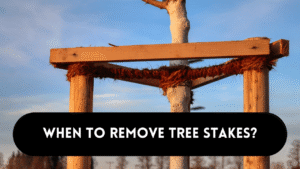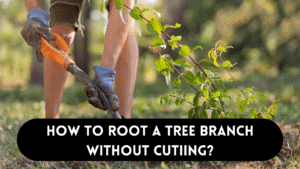You’re at the correct spot if you’ve ever wondered how to prune a money tree to make sure it grows well and provides you luck. Money trees, or Pachira aquatica as they are officially named, are not only lovely houseplants but also, in many cultures, emblems of riches and money. Maintaining the health of your money tree and making sure it continues to bring good energy into your house requires regular trimming and pruning.
The Value of Trimming Your Money Tree
An essential component of your money tree’s maintenance is pruning. Frequent pruning encourages healthy development in addition to maintaining the plant’s finest appearance. It enables you to sculpt the tree, prune off unhealthy or dead leaves, and promote the growth of new foliage.
We will go deeply into the practice of cutting your money tree in this post, step by step, and examine the rationale behind each move.
Starting Out: Essential Items
Having the right equipment and supplies on hand is crucial before you start any pruning. You’ll require:
Sharp Pruning Shears: To guarantee precise cuts and shield the plant from harm, use a good set of pruning shears.
Rubbing alcohol: To lessen the possibility of disease transmission, sanitize your pruning shears both before and after each usage.
Gloves: Wear gloves to shield your hands from the sap and other irritants that the money tree may release.
A Bag or Container for Trimmings: Prepare a bag or container to hold the branches and leaves you cut.
A plan: After trimming, determine the size and form of your money tree. This will direct the cuts you make.
Steps to Trim a Money Tree
Step 1: Take a look at your money tree
Start by closely examining your money tree. Look for any leaves that are yellowing, dead, or damaged. These are the ones you should cut off. In order to determine if the plant needs to be reshaped, you need also consider its general form.
Step 2: Clean Your Shears for Trimming
It’s imperative that you sanitize your pruning shears before making any cuts. For a few seconds, dip the blades into rubbing alcohol to remove any possible impurities.
Step 3: Eliminate Yellowing and Dead Leaves
In addition to being unsightly, dead or yellowing leaves on a money tree may serve as a haven for pests and illnesses. Cut these leaves as near to the main stem as you can using your sterile pruning shears.
Step 4: Cut Back on Overgrown Branches
It’s time to prune back any branches on your money tree that have become too long or are starting to take on an unwanted form. Consider the overall form you want to obtain when deciding how much to trim. Approximately 1/4 of an inch above a leaf node, make straight, diagonal cuts.
Step 5: Shape Trimming
You may stimulate bushier growth by pruning the top of your money tree to retain an aesthetically attractive form. New branches will sprout below the incision when the main stem is clipped to the desired height.
Step 6: Oversee New Projects
It’s well known that money trees are resilient and capable of producing new shoots. To keep the plant in the proper form, cut off any undesired branches or suckers at their base.
Step 7: Tidy and Take Care of
After cutting your money tree, it’s critical to tidy up any fallen branches and leaves. Make sure you haven’t overlooked any trouble spots by thoroughly inspecting your money tree and disposing of them appropriately. When you’re finished, don’t forget to wash your hands and sanitize your instruments.
How Frequently Should Your Need to Trim a Money Tree?
The pace at which your money tree grows and your own taste in aesthetics will determine how often you prune it. Generally speaking, while your money tree is actively developing, which is in the spring or early summer, you should trim it every several months. But, you may carry out little upkeep all year long, such as clearing away dead leaves.
Typical Errors to Avoid
Even if trimming your money tree is necessary, you should avoid the following typical mistakes:
Overreaching
Over-or harsh trimming of your money tree might cause stress and stunt its development. Remember the 25% rule and don’t remove more than 25% of the foliage at once.
Putting Off Sterilization
Your money tree may get infected with pests or illnesses if you don’t sanitize your pruning shears. Before and after each usage, make sure your tools are always cleaned.
Erroneous cutting
Plant damage or uneven development may arise from pruning a leaf node too near or too far away. Make precise incisions around 1/4 of an inch above a leaf node.
Carelessly discarding trimmed material
Get rid of the clipped branches and leaves correctly. If you leave them near the plant, illnesses and pests may find a place to reproduce.
Signs You Should Trim a Money Tree
You can tell when it’s time to prune your money tree by its obvious signals:
Yellowing or Browning Leaves: Yellowing or browning leaves indicate that they are about to die and should be removed.
Overcrowding: It’s time to trim down the branches when they become too crowded and impede light and ventilation.
Leggy Growth: Pruning might promote bushier growth if your money tree is too spreading and loses its fullness.
Unwanted Shoots: Keep a watch out for any branches or shoots that seem to be developing in an unwelcome direction or place.
Trimming to Ensure Wealth
Some cultures believe that money trees provide riches and good luck in addition to its beauty and health advantages. You may use the metaphorical power of your money tree by intentionally trimming and caring for it. Here’s a little process to carry out while pruning:
- Make a good purpose for your money tree in the outset. Imagine the riches and money you want to draw into your life.
- As you prune every branch or leaf, visualize removing all financial barriers and negativity.
- Express gratitude to your money tree for being in your house and for the good vibes it provides.
- Lastly, nurture and water your money tree, strengthening your desire for wealth.
- Keep in mind that the purpose and belief you put into these rituals determines their efficacy.
FAQs
When should I prune my money tree?
When your money tree is actively developing, which is in the spring or early summer, is the best time to prune it. The plant can recuperate from the trimming at its peak during this period.
How often should my money tree be pruned?
The money tree should be pruned as required every few months. All year long, light care may be done, such as pulling off dead or yellowing leaves.
Can I prune my money tree to make it more shaped?
Yes, you may use pruning to sculpt your money tree. In order to get the form you want, you may clip back excessive branches and promote bushier growth by trimming the top of the plant.
How should the cut branches and leaves be handled?
The clipped material must be disposed of correctly, is the answer. If you leave them near the plant, illnesses and pests may find a place to reproduce. If at all feasible, put them in your compost pile or bag and dispose of them.
What symbolic uses of trimming may I use to draw prosperity?
You may prune your money tree while carrying out a little rite. Imagine removing any financial barriers or negativity, and give thanks to your money tree for the inspiration it provides. This goal might strengthen your money tree’s metaphorical meaning as a representation of wealth.
Conclusion
For everyone who loves plants or wants to bring wealth into their homes, knowing how to trim a money tree is a useful skill. Your money tree’s metaphorical potency as a bringer of riches and fortune may be strengthened by pruning, which also maintains the tree attractive and healthy.
You may reap the rewards of a well-kept money tree for many years to come with the correct resources, methods, and a little bit of purpose.
Put on your gloves, get your pruning shears, and give your money tree the attention it needs. You’ll get closer to having a more wealthy and happy home environment with each snip.




